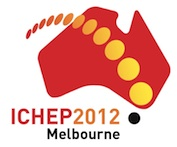Speaker
Prof.
Marko Mikuz
(University of Ljubljana, Jozef Stefan Institute (SI))
Description
Progress in experimental particle physics in the coming decade depends crucially upon the ability to carry out experiments at high energies and high luminosities. These conditions imply that future experiments will take place in very high radiation areas. In order to perform these complex and expensive experiments new radiation hard technologies will have to be developed. Chemical Vapour Deposition (CVD) diamond is being developed as a radiation tolerant material for use very close to the interaction region where detectors may have to operate in extreme radiation conditions. During the past few years many CVD diamond devices have been manufactured and tested. As a detector for high radiation environments CVD diamond benefits substantially from its radiation hardness, very low leakage current, low dielectric constant, fast signal collection and ability to operate at room temperature. As a result CVD diamond now has been used extensively in beam conditions monitors as the innermost detectors in the highest radiation areas of colliders. CVD diamond is being considered as a sensor material for the particle tracking detectors closest to the interaction region where the most extreme radiation conditions exist. We will present the state-of-the-art of the radiation tolerance of the highest quality CVD diamond material for a range of proton energies, pions and neutrons obtained from strip detectors constructed with this material. Recently single crystal CVD diamond material has been developed which resolves many of the issues associated with polycrystalline material. We will also present recent results on radiation tolerance obtained from strip detectors constructed from this new diamond material. We will discuss the use of diamond detectors and their survivability in the highest radiation environments.
Currently diamond is deployed in HEP experiments for two tasks: for beam conditions monitoring and measurement of luminosity. Beam conditions can be deduced either from beam induced current measurements replacing the commonly used ionization chambers by CVD diamond pad detectors (e.g. ATLAS BLM; CMS BCM1, BCM2) or by particle counting (ATLAS BCM; CMS BCMF). Due to its fast response and insensitivity to pile-up, ATLAS BCM also serves as the preferred luminosity monitor. As a result of positive experience with the ATLAS BCM an upgraded Diamond Beam Monitor (DBM) is being prepared for installation during the 2013-14 LHC shutdown. This detector will consist of 8 three-layer telescopes of pixelated diamond detectors. Each plane will have ~27k active pixels. The telescopes will provide sub-mm impact parameter resolution adding spatial information on the origin of backgrounds to the already precise (sub-ns) timing information from the BCM. This talk will describe the design and construction of both the ATLAS BCM and DBM systems as well as showing results from the first two years of BCM operation and test-beam studies of the DBM modules.
Primary author
Prof.
Marko Mikuz
(University of Ljubljana, Jozef Stefan Institute (SI))
Co-authors
Harris Kagan
(Ohio State University)
William Trischuk
(University of Toronto (CA))
